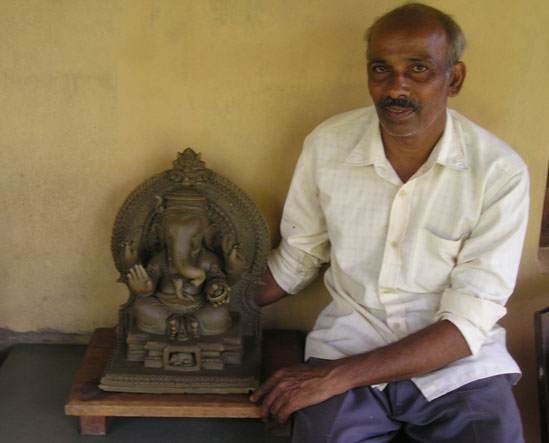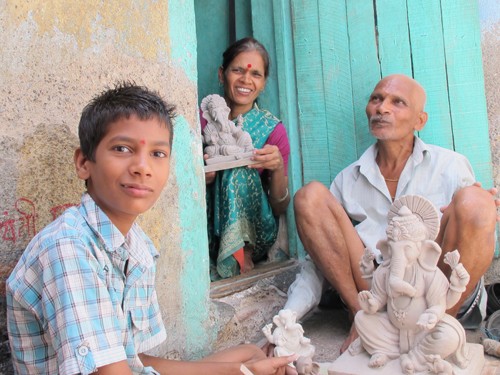The tradition of making a Ganesh idol has evolved differently in different parts of the country. A festival that originally began as a way of offerring gratitude to the earth involved bringing a handful of earth home and moulding it oneself into an idol. After worshipping it for a few days it was brought back to the river banks and submerged to carry the prayers and blessings back to the Earth.
In South India, people still follow this tradition of making ones own idol at home and children have grown up watching the ritual being followed annually.
The art of sculpting Ganeshas however provides livelihood and income to a large population of people whose entire income comes from the sale of idols they have made all year around, during month before the festival begins.


Few of these people are master sculptors, artists who retain the skill and art of moulding an idol from clay. Based on the prototypes these few masters create, moulds are pressed and then large scale production begins, done mostly by ‘printers’, people who know how to handle the material, but are not artists themselves.
As the demand of hand sculpted Ganeshas reduced in the market, fewer and fewer masters remain and the industry is now run mostly by labour.
eCoexist aims to revive this fast diminishing art by
- Offering marketing support to original sculptors
- Encouraging trainings for talented young sculptors
- Providing a buffer for the risk posed by biodegradable materials
- Investing initial capital to help smaller sculptors expand their production
- Offering design inputs to sculptors on what is marketable
We have moulded clay idols, hand sculpted idols and paper mache idols this year from various places in India such as Maharashtra, Karnataka and West Bengal.
